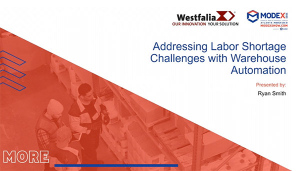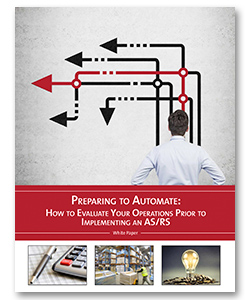How to Evaluate Your Operations Prior to Implementing an AS/RS
Technology is one of today’s fastest-growing supply chain innovations; In the 2016 MHI Annual Industry Report, survey participants ranked robotics and automation as the top emerging technology expected to transform supply chains over the next 10 years.
As more manufacturers and distributors explore automation, many will consider how they can use automated storage and retrieval systems (AS/RS) to enhance their production and distribution warehouse operations.
With an AS/RS’ ability to improve workflow, optimize space, boost throughput and more, it is easy to get caught up in the technology itself and dive headfirst into an implementation. However, no two organizations’ operations are the same. Before breaking ground on a new building or investing in new infrastructure, you must take a step back.
An in-depth, pre-implementation evaluation of your operations – from your SKU numbers, to your facility’s characteristics, to your future business plans – will help steer your company in the right direction for long-term success. As you embark on your automation project, take the following steps:
- Calculate the “80-20.” Honing in on your SKUs is key in determining the best configuration for your AS/RS. First, calculate your “80-20.” More often than not, 80 percent of a company’s volume is based around 20 percent of its SKUs. So, if you have 1,000 SKUs, about 200 of them account for 80 percent of your volume, while the remaining 800 SKUs account for 20 percent. This means that the 800 SKUs are taking up valuable warehouse space. An AS/RS will allow you to better manage these “slow-moving” SKUs and target your “top 200” to more effectively optimize space. Remember, there is no such thing as having too many SKUs – you do not have to have a certain number to introduce an AS/RS. This is a common misconception among those considering automation.
- Examine Pallets. What is your annual volume in pallets? What type of pallets are you using (GMA, CHEP, etc.), and what are their dimensions and maximum weights? You should also figure out your SKU per pallet ratio. Do you have 20,000 pallets with 2,000 SKUs? This ratio will help you understand why type or configuration of AS/RS storage is best for you. Also, do your pallets have slip sheets? Does the product overhang the pallets, and if so, what is the maximum length and width of the overhang? Although these are small details, this information is still important in your evaluation.
What’s Related



Favorites





